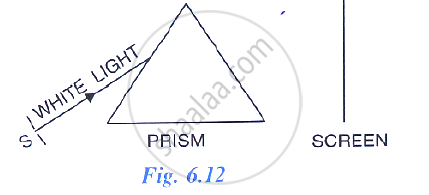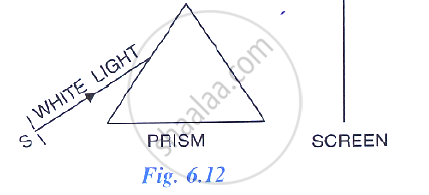Advertisements
Advertisements
Question
In following diagram shows a thin beam of white light from a source S striking on one face of a prism.

What conclusion do you draw from the observation in part (b) above?
Solution
From the observation, we conclude that prism itself produces no colour.
APPEARS IN
RELATED QUESTIONS
Why is the colour red used as a sign of danger?
How does the deviation produced by a triangular prism depend on the colours (or wavelengths) of light incident on it?
In following diagram shows a thin beam of white light from a source S striking on one face of a prism.

A slit is placed in between the prism and the screen to pass only the light of green colour. What will you then observe on the screen?
If a monochromatic beam of light undergoes minimum deviation through an equiangular prism, how does the beam pass through the prism, with respect to its base?
Write the approximate wavelengths for blue.
Light of different colours is deviated through different angles, by a prism. Explain the reason.
Give a reason, why the violet colour of white light deviated most and red colour of white light deviated least.
A prism causes dispersion of white light while a rectangular glass block does not. Explain.
Comment on the statement: ‘When any ray of white light is incident on a glass prism, it simply disperses it into its seven constituent colours.
